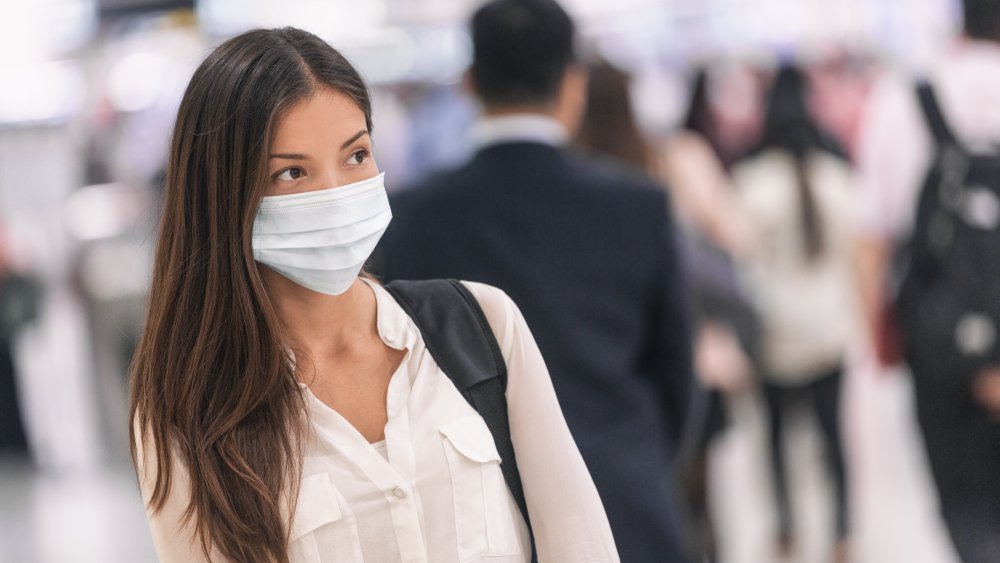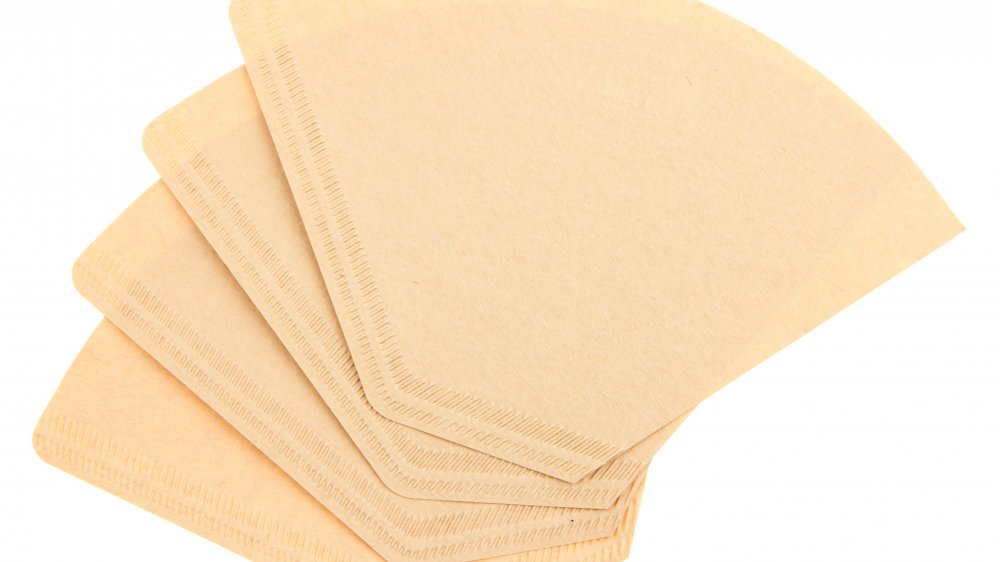Here's How To Turn Coffee Filters Into Face Masks
In case you missed it, the Centers for Disease Control and Prevention (CDC) is currently recommending that all Americans wear face masks in public to slow the spread of COVID-19. As a result, face mask sales have surged and recently they've been so hard to find that many people are making their own face masks at home instead. The CDC suggests using a bandana or t-shirt. However, if the fabric is thin, you may want to add a filter, according to Dr. Scott Segal, an anesthesiologist who spoke with Today. He explains a filter will "improve the capabilities of homemade, cloth masks."
Coffee filters are one thing you can add to your DIY face mask. They point to the Missouri University of Science and Technology's research, which found that using just three coffee filters has the potential to protect you from 24 percent of relevant particles. "They're not ideal, (but) in multiple layers, they add some measurable benefit," Dr. Joel Burken, chair of the department of civil, architectural and environment engineering at MU, told Today, elaborating this is helpful especially if your homemade mask has a looser weave.
The bandana and coffee filter DIY face mask is becoming popular
According to Country Living, all you need to create a bandana and coffee filter face mask is, obviously, a bandana (or square piece of cotton fabric), a coffee filter, and two hair ties, which act as the ear loops. To begin, simply fold the fabric in half. Then, cut your coffee filter in half, discarding the narrower bottom section. Place the remaining part of the coffee filter in the center of the fabric, then fold the top of the bandana down, covering the coffee filter. Fold the bottom of the fabric up, to layer over the top, and put the two hair bands around each end of fabric, ensuring there is enough space between them for your mouth to be covered. After that, all you need to do is fold the fabric in toward the center and tuck.
According to the CDC, ensure your face mask is comfortable, yet fitted, and can be secured or kept in place with the loop ends that go over your ears. The health organization also notes that it's important to wash your face mask regularly.

